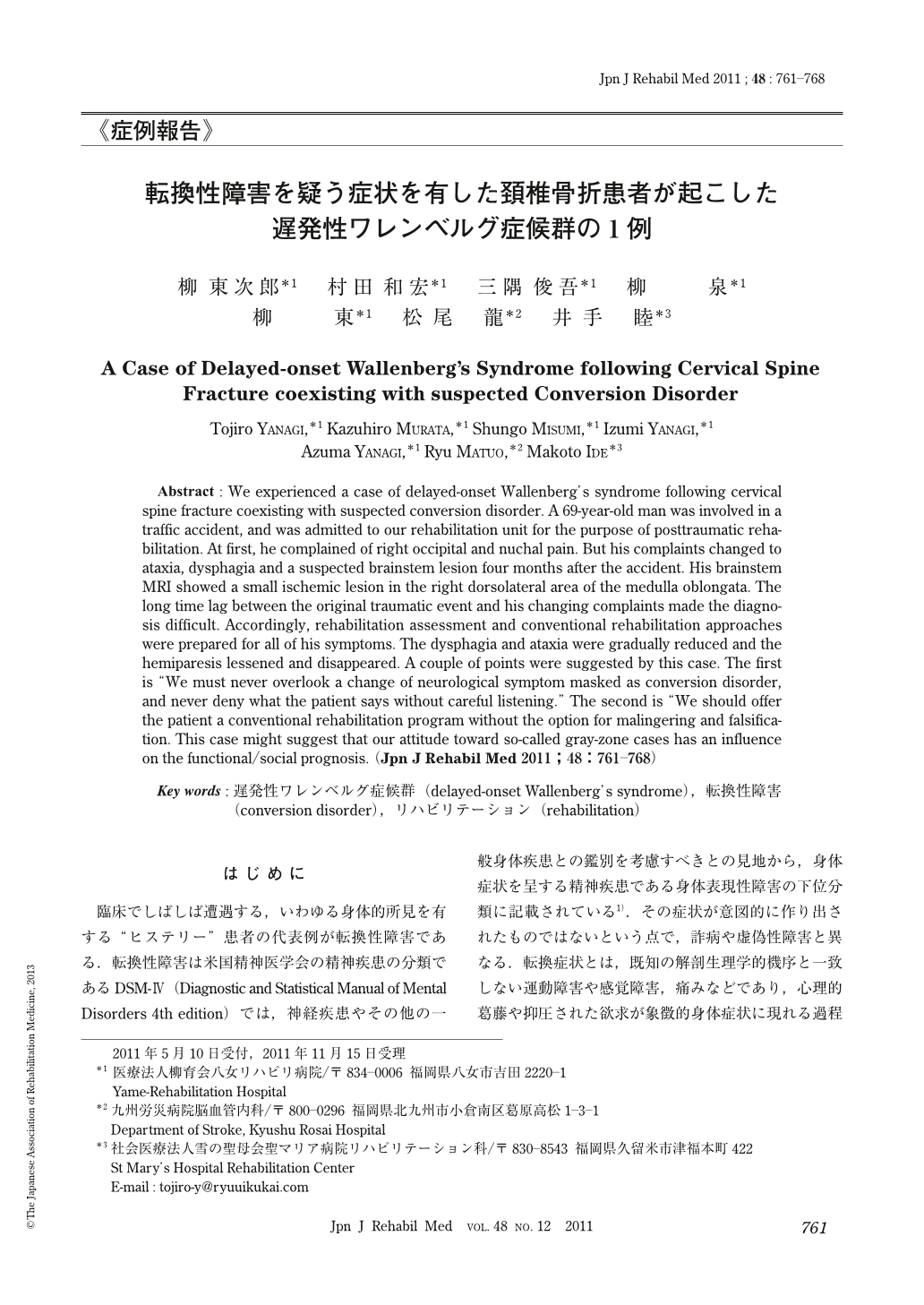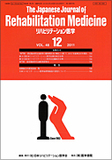Japanese
English
- 販売していません
- Abstract 文献概要
- 1ページ目 Look Inside
- 参考文献 Reference
はじめに
臨床でしばしば遭遇する,いわゆる身体的所見を有する“ヒステリー”患者の代表例が転換性障害である.転換性障害は米国精神医学会の精神疾患の分類であるDSM-Ⅳ(Diagnostic and Statistical Manual of Mental Disorders 4th edition)では,神経疾患やその他の一般身体疾患との鑑別を考慮すべきとの見地から,身体症状を呈する精神疾患である身体表現性障害の下位分類に記載されている1).その症状が意図的に作り出されたものではないという点で,詐病や虚偽性障害と異なる.転換症状とは,既知の解剖生理学的機序と一致しない運動障害や感覚障害,痛みなどであり,心理的葛藤や抑圧された欲求が象徴的身体症状に現れる過程が『転換』であると考えられている.同じヒステリーの範疇にあり,精神症状が主体となる解離性障害は意識との『解離』を示すものであり,臨床上両者は区別される.
医療機関におけるリハビリテーション(以下,リハ)の場において遭遇する転換性障害の患者の多くは,一般的に運動障害だけを呈しているだけでなく,嘔気・腹痛・下痢などの消化器症状やめまい・心悸亢進などの自律神経症状,疼痛などをあわせて訴える傾向がある.しかしその症状は心理状態に合わせて変動を認めることが多いのが特徴でもあると報告されている1~3).転換性障害の既往のある患者が脳卒中の発症を思わせる身体症状を訴えた場合,それが神経障害に起因するものなのか転換性障害なのか判断に迷い,判断材料が乏しい場合や心理的,時間的に余裕がない場合は,ややもすると後者と思い込みがちである.頚椎の椎弓骨折後のリハ目的にて転院となった,転換性障害を疑う症状を有した患者に発症した遅発性ワレンベルグ症候群を経験したので,諸家の報告を交えて報告する.
Abstract : We experienced a case of delayed-onset Wallenberg's syndrome following cervical spine fracture coexisting with suspected conversion disorder. A 69-year-old man was involved in a traffic accident, and was admitted to our rehabilitation unit for the purpose of posttraumatic rehabilitation. At first, he complained of right occipital and nuchal pain. But his complaints changed to ataxia, dysphagia and a suspected brainstem lesion four months after the accident. His brainstem MRI showed a small ischemic lesion in the right dorsolateral area of the medulla oblongata. The long time lag between the original traumatic event and his changing complaints made the diagnosis difficult. Accordingly, rehabilitation assessment and conventional rehabilitation approaches were prepared for all of his symptoms. The dysphagia and ataxia were gradually reduced and the hemiparesis lessened and disappeared. A couple of points were suggested by this case. The first is “We must never overlook a change of neurological symptom masked as conversion disorder, and never deny what the patient says without careful listening.” The second is “We should offer the patient a conventional rehabilitation program without the option for malingering and falsification. This case might suggest that our attitude toward so-called gray-zone cases has an influence on the functional/social prognosis.

Copyright © 2011, The Japanese Association of Rehabilitation Medicine. All rights reserved.


